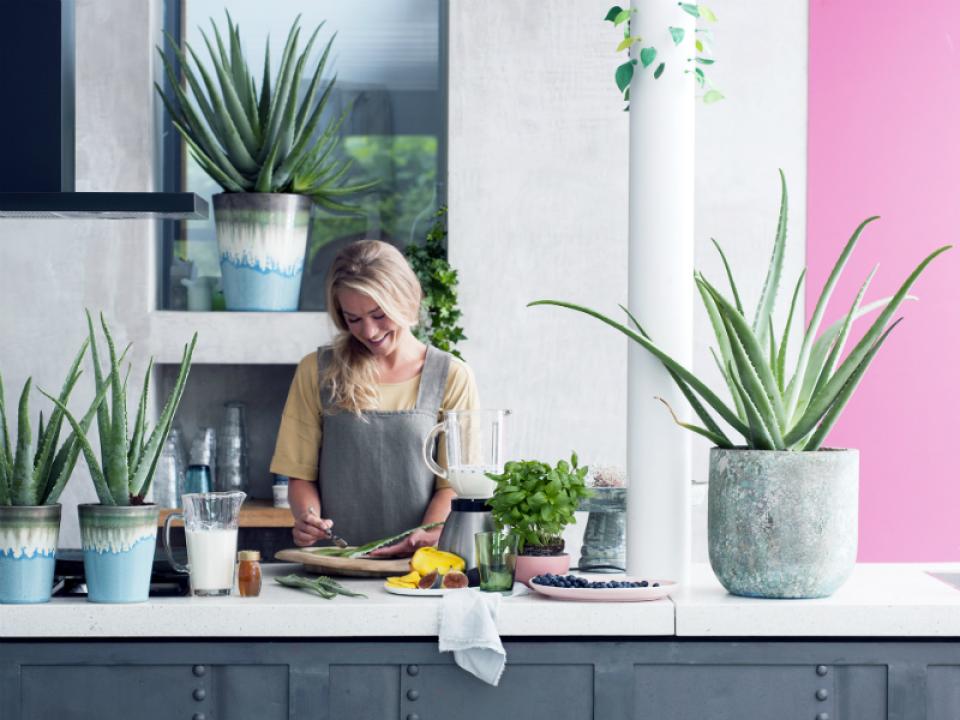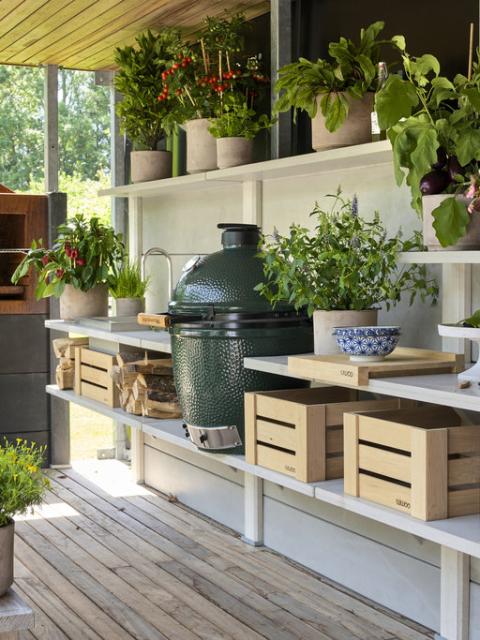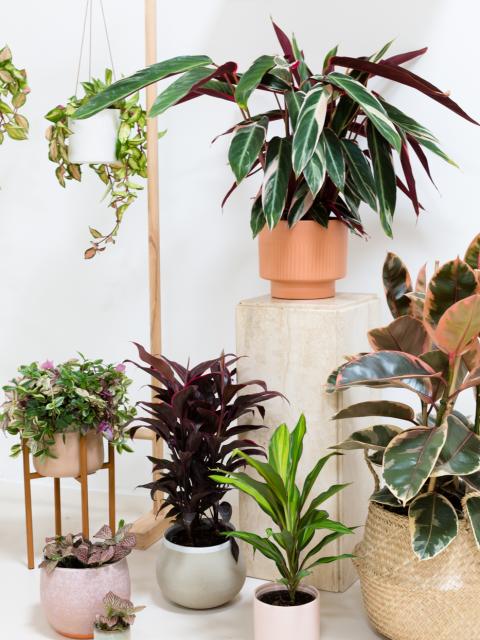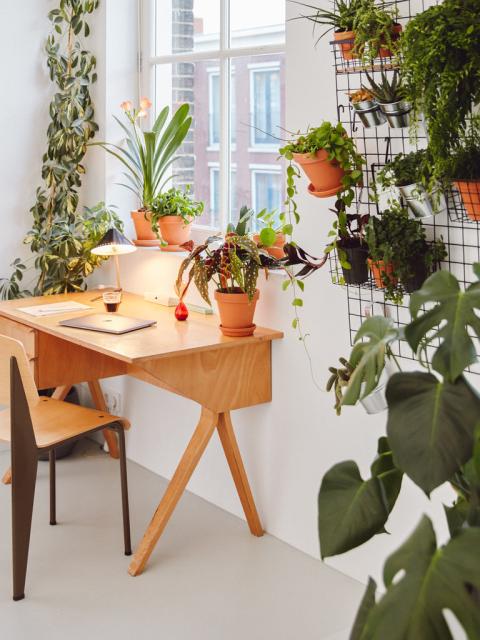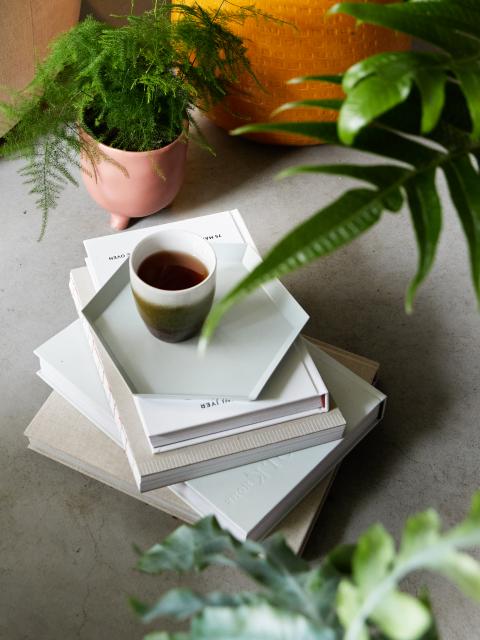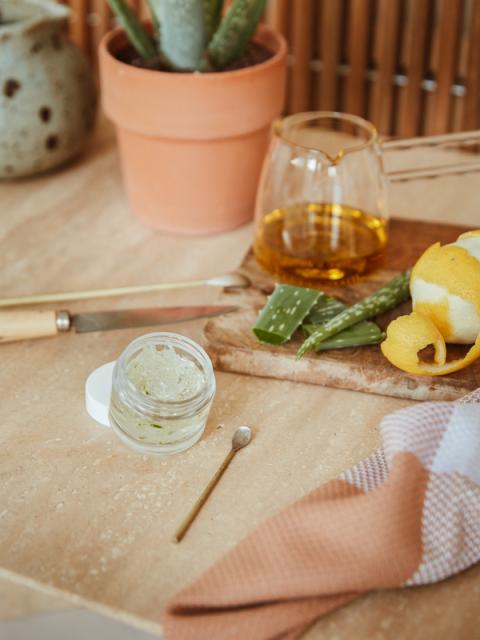1. Attractive air purifier
The NASA Clean Air Study shows that Aloë vera has air-purifying properties. The plant is particularly good at absorbing formaldehyde and benzene, substances that are found in some cleaning products, paints, glue and textiles. They don’t occur indoors in dramatic qualities, but every little helps. And Aloë is much nicer to look at than an electric air purifier.
2. Cooling effect
Aloë vera is known for the cooling clear gel that emerges if you cut through one of the thick leaves. The ancient Egyptians used it 5000 years ago as a cooling agent on sunburn, grazes and other skin problems. The clear gel refreshes and softens. It’s best not to use the yellow sap just below the leaf surface, however, since that can actually irritate the skin. Aloë is not a speedy grower, so be restrained in your cutting.
3. Summer drink
Healthy foodies are going mad about Aloë drinks that are said to do wonders for your digestion, help you lose weight and boost your immune system. There’s virtually no scientific evidence for this though - the only thing you can say for certain is that the drinks taste good on a hot day. In any case don’t make any drinks from the pure plant gel, but opt for Aloë juices or soft drinks based on powder or essence. Always check that it doesn’t contain any aloe bark (aloin / aloïne), since that’s definitely not good for your health.
4. Anti-dandruff product
Aloë vera is used to care for the scalp and for the treatment of dandruff or abnormal hair loss. A study in which Aloë Vera lotion (30%) was applied twice a day for 4 to 6 weeks showed a reduction in dandruff. You can find quite a few shampoos and conditioners based on Aloë vera in health food shops. You can also make it yourself: mix 1 tablespoon of aloë gel with 5 ml of glycerin, 60 ml of liquid Castile soap, 1 ml vegetable oil and and 1 aspirin (500 mg). If you don’t suffer from dandruff but still want aloë shampoo, omit the aspirin.
5. Supplement with quality mark
Aloë vera is often used in nutritional supplements and/or cosmetics products. The problem is that many of these products are too dilute, or the plant is mishandled during the production process causing it to lose a lot of its efficacy. In order to deal with the uncontrolled spread of Aloë vera products, the International Aloe Science Council (IASC) has developed a quality label. This non-profit organisation has been conducting research into the healing properties of Aloë Vera for over 20 years, and inspects plantations and manufacturers of Aloë Vera products. If a tube or jar features the IASC logo, you can be sure that all is well.

